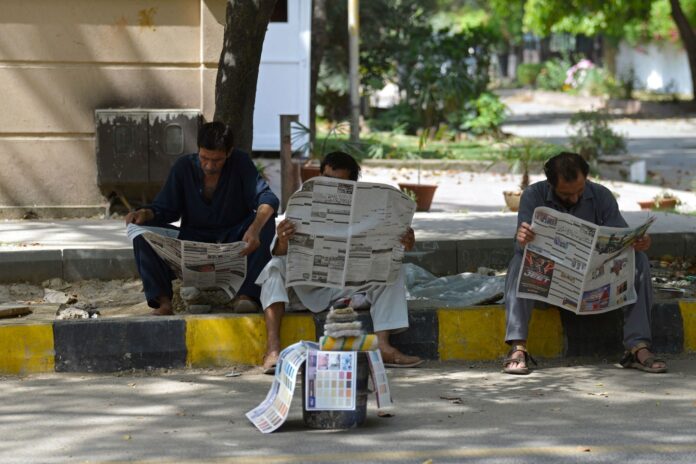Data journalism is an emerging field of journalism that involves the use of data analysis and visualisation techniques to find and report stories. It is the process of collecting, analysing, and presenting data in a way that makes it accessible and understandable to the general public.
With the proliferation of data in the digital age, data journalism has become an important tool for journalists to report on complex issues and provide insight into trends and patterns.
Data journalism involves the collection, analysis, and presentation of data in a journalistic context. It is a combination of traditional reporting and data analysis. It can take many forms, including data-driven news articles, interactive graphics, and visualisations.
Data journalism can be used to uncover patterns and trends, identify correlations, and provide context to complex issues. The goal of data journalism is to inform and educate the public through the use of data.
Data journalism requires a set of skills and tools that are unique to the field. Journalists need to have a solid understanding of statistics and data analysis to be able to collect, clean and analyse data. They also need to have strong communication skills to be able to present the data in a way that is understandable to the public.
In addition, journalists need to have access to data and the tools to analyse it. This may include data sets, statistical software, and visualisation tools. Data journalism involves a set of steps that include data collection, data cleaning, data analysis, and data visualisation.
These steps are essential to creating data-driven news articles, interactive graphics, and visualisations.
The first step in data journalism is data collection. Journalists need to find and collect relevant data sets for their stories. This may involve searching for data on government websites, using web scraping tools to extract data from websites, or collecting data through surveys. The data collected should be relevant to the story and be in a format that can be easily analysed.
Once the data is collected, the next step is data cleaning. Data cleaning involves removing errors and inconsistencies in the data. This may include removing duplicates, correcting spelling errors, and filling in missing data. Data cleaning is important to ensure that the data is accurate and can be analysed correctly.
After the data is cleaned, the next step is data analysis. This involves using statistical software to analyse the data and find patterns and trends. This may include running regression analysis, calculating descriptive statistics, and creating data visualisations. The goal of data analysis is to find insights into the data that can be used to inform the story.
The final step in data journalism is data visualisation. Data visualisation involves creating visual representations of the data that make it easy to understand. This may include creating charts, graphs, and interactive visualisations. Data visualisation is important to help readers understand the data and the insights that were found in the analysis.
Data journalism has had a significant impact on the field of journalism and society as a whole. Data journalism has increased transparency in government and other organisations.
By collecting and analysing data, journalists can uncover information that may have been hidden or difficult to access. This has led to increased transparency and accountability in many areas.
Data journalism has led to improved reporting on complex issues. By analysing data, journalists can provide context to stories and uncover patterns and trends that may not have been apparent otherwise. Similarly, data journalism has increased engagement with readers.
Developing countries like Pakistan can benefit greatly from data journalism by promoting investigative journalism for uncovering corruption, exposing wrongdoings, and holding people accountable.
Data journalism can be used to support investigative journalism by providing hard evidence and data to support allegations of corruption, poor governance, malfeasance, or other unethical practices. This culture of reporting would certainly contribute to a more transparent and accountable society.
The field can also be used to analyse policies and their impact on society. This can include analysing government budgets, identifying areas of government spending that are not delivering expected results, and assessing the effectiveness of policies aimed at reducing poverty, improving education, or promoting economic growth. This kind of reporting can help identify areas where improvements can be made and contribute to more effective policy-making.
Data journalism can also be used to create visualisations that help raise awareness about social and economic issues. For example, data visualisations can be used to illustrate the extent of poverty or the impact of environmental degradation on different communities. These types of visualisations can help to raise awareness about issues that may not be receiving sufficient attention from the media or government.
Data journalism could be used to analyse economic trends and identify growth opportunities. For example, data on the performance of different sectors of the economy can be used to identify areas where investment could be directed to generate growth and employment.
Similarly, data on international trade patterns can be used to identify potential export markets and help guide economic policies.
Data journalism can be used to analyse the healthcare and education systems as data on healthcare outcomes, school enrollment rates, and educational achievement can be used to identify areas where improvements can be made. This type of journalism can help to guide policies aimed at improving access to healthcare and education and to ensure that these services are delivered effectively.
Data journalism can be a powerful tool for promoting composite development as it could be used to expose corruption, analyse policies, raise awareness, identify growth opportunities, and improve healthcare and education systems. By using this to inform policy-making and promote transparency and accountability, both Pakistan and its cash-strapped media can move towards a more prosperous future.























